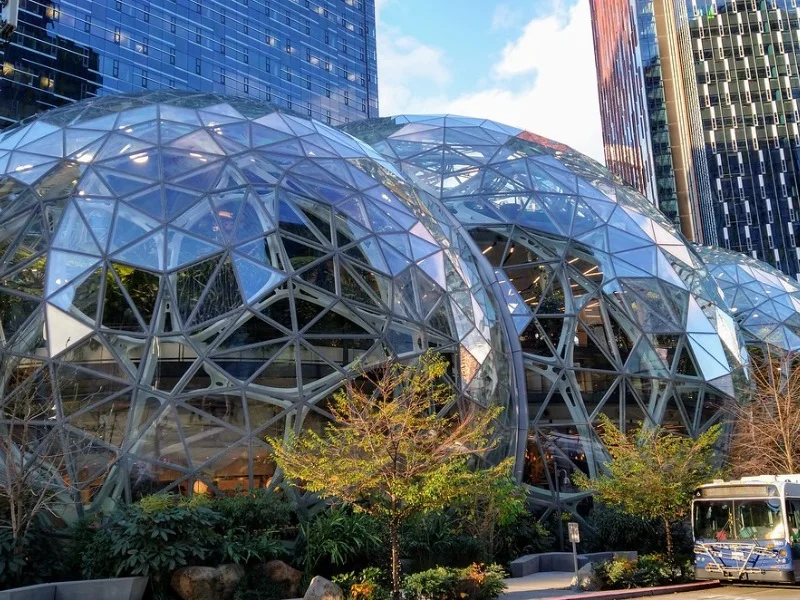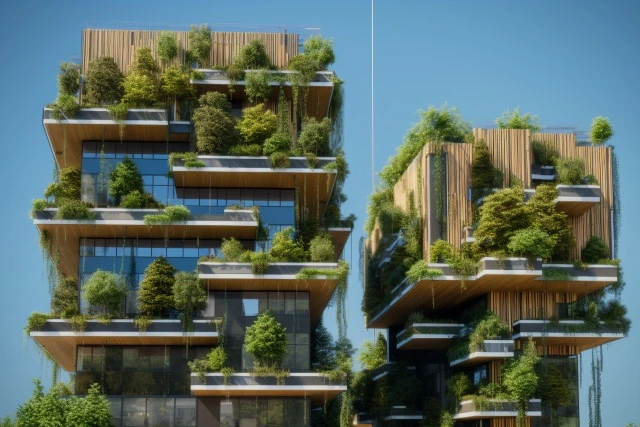The world’s most famous brands: How sustainable are their headquarters?
We discuss the environmental innovations of buildings belonging to 10 of the world’s most famous brands to learn what measures they have taken to achieve accredited levels of sustainability.

Photo credit: amanderson2 / CC BY 2.0
Each industry faces their own unique challenges to reduce their carbon footprint, but one way in which all of the biggest and most valuable brands in each sector can lead by example is the effort they make in creating a more sustainable physical space to operate in.
For many companies within sectors such as tech, retail or hospitality, showing a commitment to reducing their carbon footprint is not only the ethical choice. It also positions their brand favorably among the consumers that they rely on to sustain their business.
Millions of environmentally conscious Gen Z iPhone users surely celebrated when, in 2020, Apple announced its ambitious goal to be carbon neutral by 2030. It gave them one less reason to discard their sleekly designed phones in favor of another brand that might rival or better Apple’s sustainability record.
Within industries such as finance, however, the environmental concerns associated with major companies can be more discreet but just as polluting. Finance contributes an estimated 3% of the world’s carbon emissions, which is a similar percentage to big tech.
However, these pollution levels are a result of where their money flows via investment, lending and underwriting in other polluted industries, rather than the direct actions of those working in banks.
Sustainability in bricks and mortar
For a company to be deemed sustainable, they have to make conscious and practical adjustments to how they do business on an environmental, social and economic level.
Part of this mission involves making progressive changes to where a company’s employees meet to work. With buildings accounting for 40% of greenhouse gas emissions globally, the office also needs to take major steps in decarbonising for a greener future.
The LEED (Leadership in Energy and Environmental Design) certification measures buildings on various grades of sustainability. At the time of writing, it has graded and highlighted over 166,000 buildings, identifying those leading the way in making commercial structures more environmentally and socially sound on the road to net zero.
These certifications consider a range of factors when assessing the sustainability of a building, including water efficiency, energy & atmosphere, materials & resources, indoor environmental quality and location & transportation.
Taking a deeper dive into the LEED database and other types of building that are credited for environmental innovation, we have analyzed the headquarters of 10 world famous companies to see what elements make their buildings so innovative and renowned for their sustainability.
“Green buildings are good for the environment and good for people but also make a lot of business and economic sense. This is why major corporations worldwide have adopted green building certification for their headquarters and beyond, providing them with a robust and globally recognized green building framework to measure and manage their real estate performance. By supporting certified buildings, companies can save money, improve efficiency, lower carbon emissions, and create healthier places for people.”
Melissa Baker, senior vice president, U.S. Green Building Council
How we conducted this research
To create this list of sustainable offices, we curated a seed list of the world’s most famous brands within the sectors of tech, finance, hospitality, retail and online services. We then cross-referenced any headquarters of each company with the LEED (Leadership in Energy and Environmental Design) certification database available on www.usgbc.org. Our final list of 10 offices or projects for each brand was determined by the availability of information from their LEED certification where their scorecards and certification were still valid and not undergoing reassessment.











